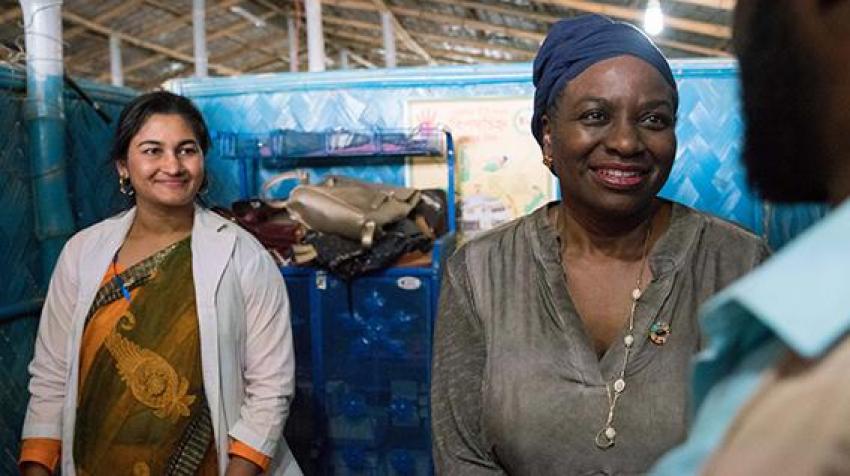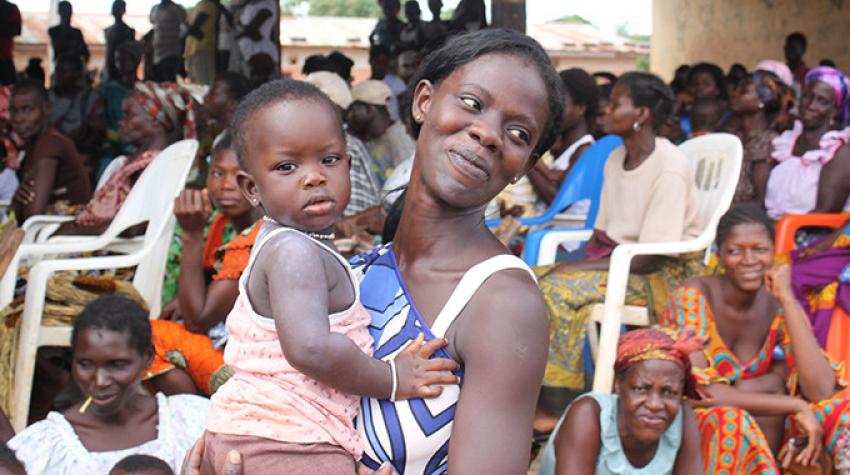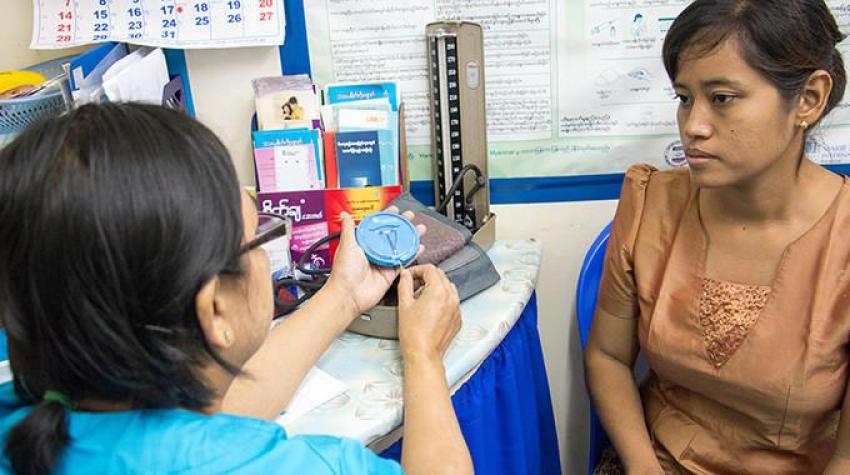Population policies today are about people, not numbers, and about the rights of individuals and couples to freely decide whether, when or how often to have children. But it has not always been this way.
In 1969, the year the United Nations Population Fund (UNFPA), the United Nations sexual and reproductive health agency, was founded, world population had reached 3.6 billion and was growing rapidly. Fertility rates worldwide then were about double what they are today.
It was a time when many governments were concerned about the impact of population growth on their economies, societies and environments. Only a year earlier, Paul Ehrlich’s book, The Population Bomb,1 was released, warning that “overpopulation” would lead to famines and destroy the planet, and calling for population control to halt the rising numbers of people. Yet, not everyone shared Ehrlich’s view about population growth and how best to cope with it. The international community came together that same year in Tehran, where Governments agreed that “parents have a basic human right to determine freely and responsibly the number and the spacing of their children.”2
It was in this context that UNFPA was established to advise developing countries about the implications of rapid population growth and to support national population programmes, which began dispensing contraceptives on an unprecedented scale. Through these programmes, real reproductive choices became a reality for more and more women. As a result, women gained power to control their own fertility and began having fewer children. Despite the increased availability of contraceptives, however, hundreds of millions of women still had no access to them. Barriers ranging from high costs to limited supplies in remote areas and negative attitudes towards contraception kept many women from making decisions about their own bodies, including whether or when to become pregnant.
Over the next quarter-century, a grass-roots movement led by women's groups pushed not only for more contraceptives but also for actions that would help tear down the remaining barriers to information and services. This movement paved the way for a fundamental shift in the way in which governments everywhere approached population policies. Many earlier programmes aimed only at reducing the number of children a couple had. Newer programmes emphasized the importance of giving women the power and the means to manage their own fertility.
This shift culminated in 179 Governments adopting the groundbreaking Programme of Action of the International Conference on Population and Development (ICPD) in Cairo in 1994. The Programme of Action aimed to empower women and make reproductive health a reality for all, while reaffirming the right of individuals and couples to decide freely and responsibly the number and spacing of their children—the same right that had been acknowledged 26 years earlier at the International Conference on Human Rights in Tehran.
We now have indisputable evidence that population policies grounded in individual rights and choices improve the well-being of women and girls, transform families and societies, and accelerate global development.
We now have indisputable evidence that population policies grounded in individual rights and choices improve the well-being of women and girls, transform families and societies, and accelerate global development. Couples and individuals who are informed and free to make decisions about the timing and spacing of pregnancies generally choose smaller families.
Twenty-five years ago, a woman in a least developed country had nearly six children; today she has fewer than four. Much of this decline in fertility rates can be attributed to expanded access to modern methods of contraception throughout the developing world. Hundreds of millions of women who want to prevent a pregnancy now have the means to do so. Yet there are still hundreds of millions who do not. According to the latest available data, there are still 214 million women who want to prevent pregnancy but are not using contraception, and only 57 per cent of married women from a group of 51 countries where data are available have the power to make their own decisions about using contraception, seeking health care and having sexual intercourse with their partners.

There is clearly a long way to go before the ICPD Programme of Action’s goal of sexual and reproductive health for all is achieved. The poorest women and girls, people with disabilities, indigenous people, racial and ethnic minorities and persons of diverse sexual orientation face persistent inequalities and stigma. Universality is a guiding principle of ICPD. Living up to the commitments we made in 1994 is above all a matter of enabling everyone, everywhere, to enjoy their rights. But it also hinges on and contributes to other global objectives, including the United Nations 2030 Agenda for Sustainable Development and its 17 Sustainable Development Goals (SDGs).
For example, meeting SDG 1: End poverty in all its forms everywhere, depends in part on whether girls can make a safe and healthy transition through adolescence into adulthood and reach their full potential in life. Likewise, to fulfill SDG 3: Ensure healthy lives and promote well-being for all at all ages, women must gain the power to have healthy pregnancies and safe deliveries, as well as to protect themselves from unintended pregnancies and sexually transmitted infections, including HIV. SDG 5: Achieve gender equality and empower all women and girls, can only be achieved when women and girls make their own decisions about when and with whom to have sex, and about whether to become pregnant. If we cannot achieve the goals laid out in the ICPD Programme of Action, then it will be impossible to meet the SDGs. In other words, there can be no SDGs without ICPD.
Success also depends on high-quality population data to lift the cloak of invisibility off the shoulders of the most vulnerable. To this end, UNFPA is working with countries and the United Nations system to build stronger population data systems that can find those furthest behind and identify their needs.
The way forward is the full realization of rights and choices for every individual and couple, no matter where or how they live, or how much they earn.
The way forward is the full realization of rights and choices for every individual and couple, no matter where or how they live, or how much they earn. This includes dismantling all the economic, social and institutional barriers that stand in the way. Lifting these obstacles has the potential to not only improve the lives of individuals but also help propel economies forward, building a new foundation for more prosperous, equitable and resilient societies.
We will measure our success not only by declining fertility rates, but also by the progress people make themselves, by more women and girls freely deciding whether they want to get an education, enter the labour force, get married or have children.
The clock is ticking towards 2030. We need far more resources to deliver for all with an urgency commensurate to the task at hand. The benefits of investing in sexual and reproductive health, including family planning, cut across sectors, and yet the burden of financing is borne predominantly by the health sector, which remains substantially underfunded. Our task is to bring in a broader range of partners, and above all, the robust financing needed to deliver bold, integrated, innovative solutions. This means bringing the health sector together with the education, gender, population and development sectors, and critically, with ministries of finance and treasury.
That is why UNFPA, along with the Governments of Kenya and Denmark, are co-convening a summit in November in Nairobi, aimed at mobilizing concrete global, national and local commitments—including, and especially, financial ones—from governments, from international financial institutions, from civil society, the private sector and more.
In Nairobi, we want to see bold political and financial commitments to achieve universal sexual and reproductive health, including actions to end all unmet demand for contraception; end preventable maternal death; and end gender-based violence, female genital mutilation and child marriage—all by 2030, the same year that the SDGs are to be achieved. We hope Nairobi will be a springboard for solutions. We need to collaborate and innovate like never before—particularly in the area of data.
Reaching these goals will clear the way to a world where every pregnancy is wanted, every childbirth is safe and every young person’s potential is fulfilled. This is the world we all want—and can have, if we join together in Nairobi and beyond to complete the unfinished business we began 25 years ago.
On this World Population Day, 11 July 2019, UNFPA calls on governments, civil society, communities and people from all sectors to recommit to the goals of the ICPD Programme of Action and to accelerate progress in making rights and choices a reality for all.
Notes
1. Ehrlich, Paul R., The Population Bomb (New York, Ballantine Books, 1968).
2. Final Act of the International Conference on Human Rights, Teheran, 22 April to 13 May 1968 (United Nations publication, Sales No. E.68.XIV.2), para.16.
The UN Chronicle is not an official record. It is privileged to host senior United Nations officials as well as distinguished contributors from outside the United Nations system whose views are not necessarily those of the United Nations. Similarly, the boundaries and names shown, and the designations used, in maps or articles do not necessarily imply endorsement or acceptance by the United Nations.





